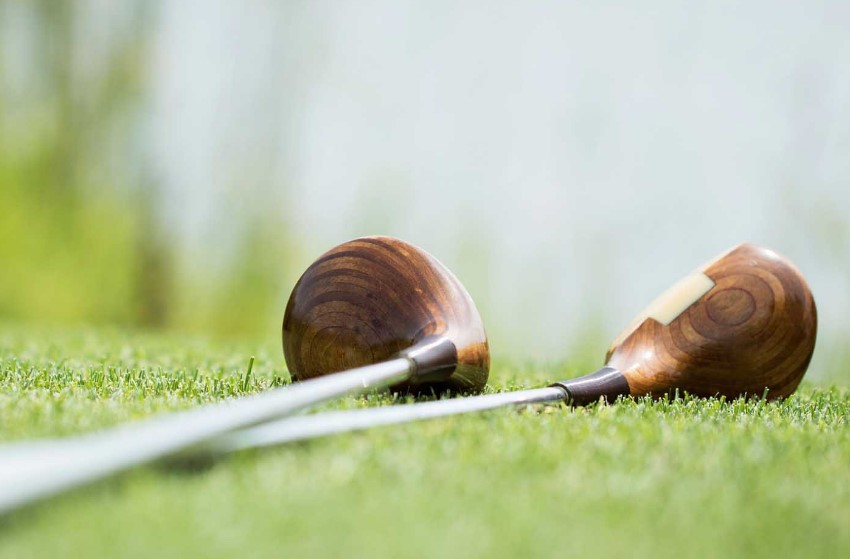To this day, very few golf enthusiasts truly understand the history of the game. Most players are more focused on jumping straight into action, swinging clubs and striking balls. However, understanding the historical roots and evolution of golf is inseparable from the development of the sport itself. According to GoGolf, learning about the history of golf can foster a deeper sense of pride and love for this game that traces its origins to Scotland.
The Origins of the Game of Golf

The origins of golf are complex and often debated. While many historians agree that the modern version of golf originated in Scotland around the 12th century, historical records suggest that similar games were played in various parts of the world long before that. A widely accepted story describes how Scottish shepherds would strike small stones with sticks, aiming them into rabbit holes. The area that is now home to The Royal and Ancient Golf Club of St Andrews is believed to be one of the earliest places where this game was formalized.
However, the historical narrative doesn’t end there. On February 26, 1297, in Loenen aan de Vecht, Netherlands, a game was recorded where players used a stick to hit a leather ball toward a target several hundred meters away. By the 17th century, similar stick-and-ball games were popular across the Netherlands, and some historians consider these to be predecessors of modern golf.
The debate deepened in April 2005, when Professor Ling Hongling from Lanzhou University published findings indicating that a golf-like game was played in China during the Southern Tang Dynasty, around 500 years before golf was first documented in Scotland. The game was called chuiwan (捶丸)—with “chui” meaning “to hit” and “wan” meaning “ball.” Records from the Song Dynasty (960–1279), especially in Dōngxuān Lù by Wei Tai, described the game complete with illustrations and a list of clubs—such as cuanbang, pubang, and shaobang—which resemble modern drivers and woods.
Despite these findings, The Royal and Ancient Golf Club of St Andrews maintains that the 18-hole golf format, as we know it today, undeniably originated in Scotland. This claim is supported by 15th-century Scottish Parliament Acts that banned the game of “gowf” due to its interference with military training. While some argue whether “gowf” refers directly to modern golf, other evidence suggests the word “golf” likely evolved from the Dutch term “kolf”, meaning a striking stick or club.
Ultimately, most scholars agree that although golf-like games existed across Europe and Asia, the codification of modern golf rules, structured courses, and standardized gameplay all took place in Scotland. This is why the country is widely recognized as the true “home of modern golf.”
The Development of Golf Courses

When golf first emerged, courses did not always have 18 holes. One of the sport’s most legendary courses—St Andrews Links in Scotland—originally had only 11 holes laid out on a narrow strip of land owned by Queen Mary in the 15th century. Players would start from the first hole near the clubhouse, play to the farthest hole, then turn around and play the same holes in reverse—creating a 22-hole round.
In 1767, several of the holes were considered too short and were subsequently combined. This reduced the total to 9 holes, which players would again play forward and back—resulting in the now-standard 18-hole round. This layout later became the global standard, with the St Andrews format being replicated by golf courses worldwide.
Beyond the number of holes, course characteristics also began to vary. Some courses were built along coastlines with sandy, undulating terrain—these are known as “links” courses. These environments posed natural challenges such as strong winds and uneven surfaces, demanding exceptional adaptability from players. One of the world’s oldest continuously used golf courses, The Old Links at Musselburgh Racecourse, has documented play since 1672, and even claims that Queen Mary played there in 1567.
Over time, modern golf courses began incorporating complex design features, such as bunkers, artificial lakes, and rough areas to increase difficulty. These design elements transformed golf from a simple ball-striking game into a sport requiring strategic thinking, technical skill, and adaptability to diverse terrain.
The Evolution of Golf Equipment

The advancement of golf equipment has been instrumental in shaping the game into what it is today. Initially, golf clubs were made from local wood. As technology progressed, hickory became the wood of choice for shafts due to its strength, while American persimmon was used for the club heads because of its durability. Early golf balls were also wooden, but by the 17th century, they were replaced by feather balls—made by stuffing wet goose feathers into wet leather casings, then stitching and drying them so the expanding feathers created a hardened sphere.
A major revolution occurred in 1848 with the introduction of the gutta-percha ball or “gutty,” made from dried tree sap. These balls were more durable and less expensive to produce, remaining popular into the 1890s. Then in 1898, Coburn Haskell collaborated with the BF Goodrich Company to create a rubber-core golf ball wound with elastic thread and coated with gutta-percha. This design quickly became the standard.
On the club side, metal shafts were first tested in the late 1890s by Thomas Horsburgh, though they weren’t officially approved until 1929, when the Prince of Wales used one. In 1931, Billy Burke became the first golfer to win a major (U.S. Open) using steel-shafted clubs.
The 1970s brought the next big innovation—graphite shafts, which were lighter and more flexible. In the early 1980s, metal clubheads began replacing traditional wooden ones. Today’s modern drivers typically feature titanium heads, which are both lightweight and strong, allowing for larger clubface designs without excessive weight. Meanwhile, modern balls are now layered with durable polymer materials like Surlyn, offering better performance and longevity compared to traditional balata-covered balls.
Etymology and Cultural Aspects
The term “golf” first appeared in the Scottish Parliament Act of 1457, which banned the game—then referred to as “gouf”—because it was deemed a distraction from archery practice needed for military readiness against England. The word is believed to derive from the Scots term “goulf”, meaning “to strike,” or possibly from the Dutch word “kolf”, meaning “club.”
This ban was reiterated in 1452 by King James II, who feared that golf was drawing his troops away from military training. Despite these restrictions, the game’s popularity continued to grow and it eventually became a key part of Scottish cultural identity, before spreading to England and then the rest of the world.
Beyond linguistic roots, golf evolved into a symbol of social status, especially during its early years. The expensive equipment, exclusive club memberships, and the leisure time required to play made golf largely accessible only to the nobility and elite. However, over time, golf became more inclusive, thanks to public courses, affordable gear, and international tournaments that broadened its global appeal.
[ Follow our social media Account: GoGolf Instagram | GoGolf Facebook | GoGolf X ]











